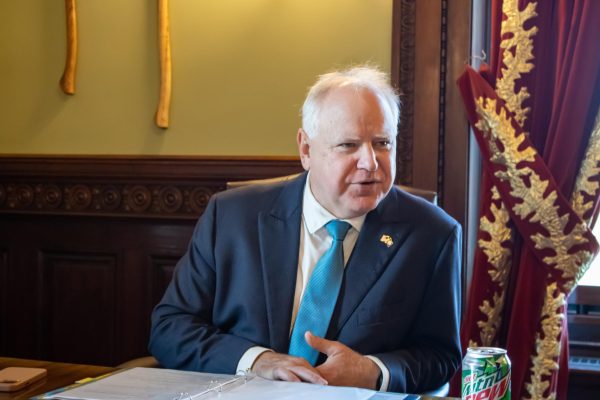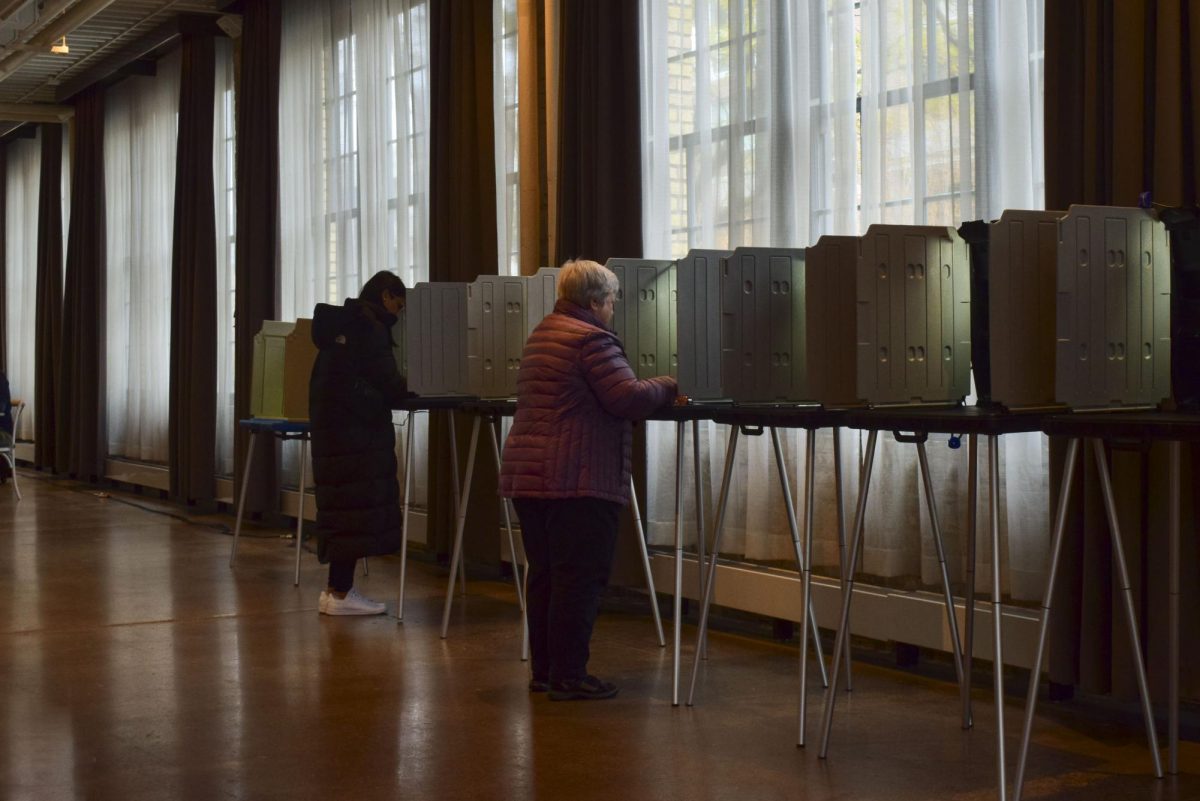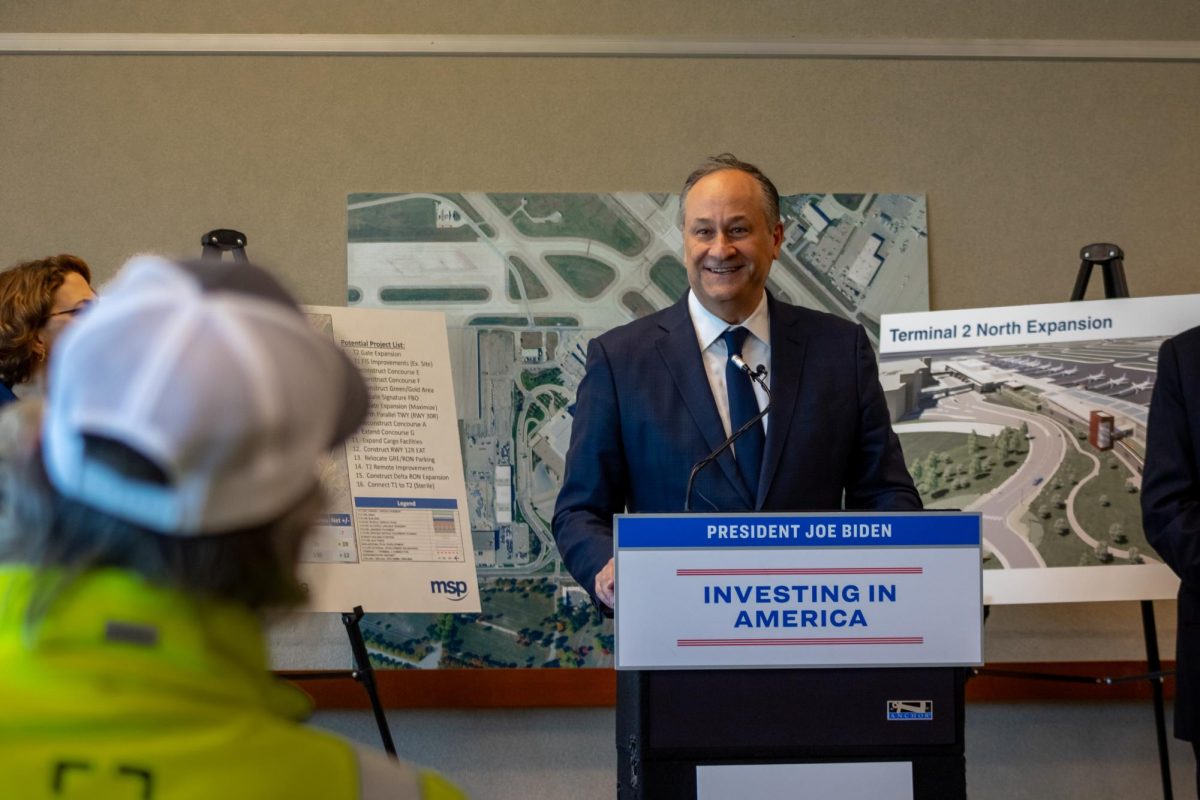Fifteen years of planning led to the first public discussion of a high-speed train from the Twin Cities to Chicago this week.
A forum held Monday night focused specifically on a train from the Twin Cities to Milwaukee, one leg of the Midwest Regional Rail Initiative, which would eventually connect the Midwest with high-speed trains and a hub in Chicago. The 110-mph train would be a significant advancement from the current 79-mph Amtrak train.
The proposed train would also make six daily trips to Chicago, instead of the current two trips run by Amtrak, said Charlie Quandel, chairman of the High Speed Ground Transportation Association. The initiative would connect nine Midwest states by upgrading existing freight tracks, said Dan Krom, director of the Minnesota Department of Transportation
passenger rail office.
The general tone of forum participants suggested that a high-speed train was necessary for Minnesota, though opinions differed on specifics.
Some said the state should focus on increasing the number of Amtrak trains first, while others said the state should use technology comparable to European rail lines.
Quandel said the corridor program is in its first phase of planning. An analysis of possible routes was completed in February. Conceptual engineering and environmental analysis of the train and its tracks will begin January, and completion is projected by 2015.
The open house was MnDOTâÄôs effort to inform the public about different possible routes from the Twin Cities to Milwaukee and get input. The discussion was held in the Union Depot in St. Paul.
“IâÄôm excited about it. IâÄôm very impatient,” said St. Paul and La Crosse, Wisc. resident Kathryn Severance. “I want it to be done.”
She and her husband, Jay Severance, live between the two cities and have family in Chicago.
At the forum, the train was compared to other methods of transport, and organizers said the ideal travel time would be roughly five hours from Minneapolis to Chicago.
“Unless they start turning I-94 into an eight-lane raceway, itâÄôs getting to be a slower and slower trip,” Jay Severance said of current transit.
The increased frequency of the train will increase its “viability,” University of Minnesota graduate student Andi Dierich, said.
Dierich makes bimonthly trips to Chicago and sees the train as potentially increasing the infrastructure of the state.
Criticism
National Association of Railroad Passengers representative Robert Moen said the state should focus more on improving the Amtrak transit it already has before attempting “state-of-the-art” trains.
“They want to send a man to the moon rather than just get him to Los Angeles,” he said.
Other attendees said the corridor program needs to advance more rapidly.
“ItâÄôs just so easy to get everywhere [in Europe], without having to get on the highways,” said Severance, who lived in Europe with his wife in the 1990s. The couple said Minnesota can learn a lot from EuropeâÄôs train system.
The trains need to be more like FranceâÄôs high-speed system, the TGV, said Thomas Reader, a Twin Cities resident and a railroad buff, because TGV trains are more efficient and a better use of technology.
Dierich said the average and maximum speeds are a drawback. She said she could drive the average train speed of 71 mph in the same time.
“I can get down to Chicago in six hours,” she said.
Reader said the corridor program is taking a “Band-Aid approach,” and that the program should build entirely new rail lines, instead of reconstructing existing ones. He contended MnDOT is not taking all of the complications of a high-speed train into consideration.
“It will probably take longer than they think to get all of the approvals,” Reader said. Funding and the federal government are major contributors for the success or failure of this project, he said.
Many residents feel price is a major factor.
Dierich said the train would have to be comparable to other forms of transport, like Megabus, which is the cheapest and most accessible form of transport, Dierich said. Tickets are roughly $15, and “you spend $20, at least” to drive to Chicago.
Dierech said she wants the state to focus more on the student population in terms of cost and accessibility.
Dierech wanted more public discussion out of MondayâÄôs meeting. Moen agreed.
“At every one of these meetings, they tell us what theyâÄôre doing,” Moen said. “We donâÄôt get a chance to interact. ItâÄôs mostly a show for us.”
The next open house is Dec. 6 in Rochester.







